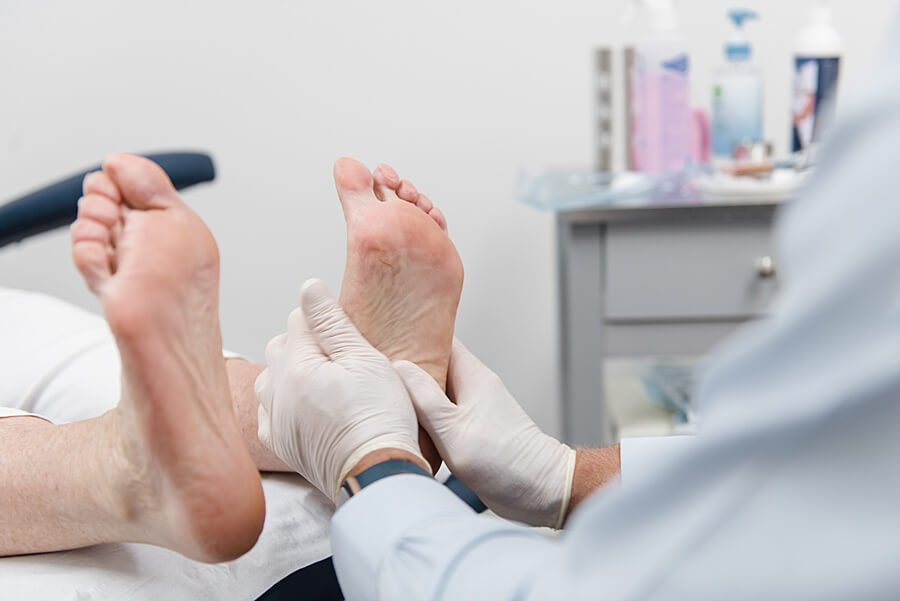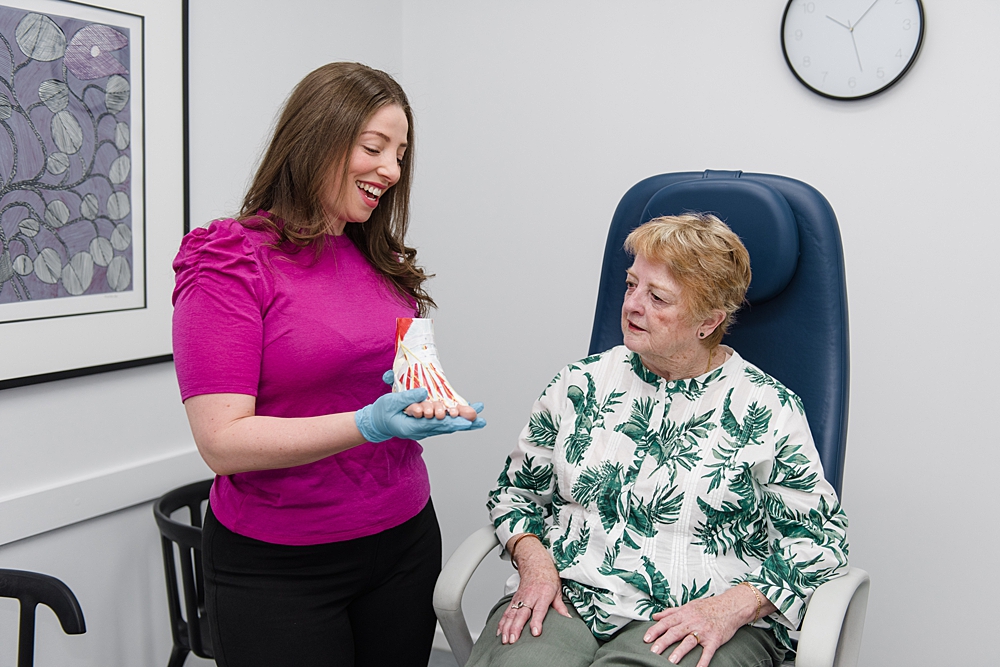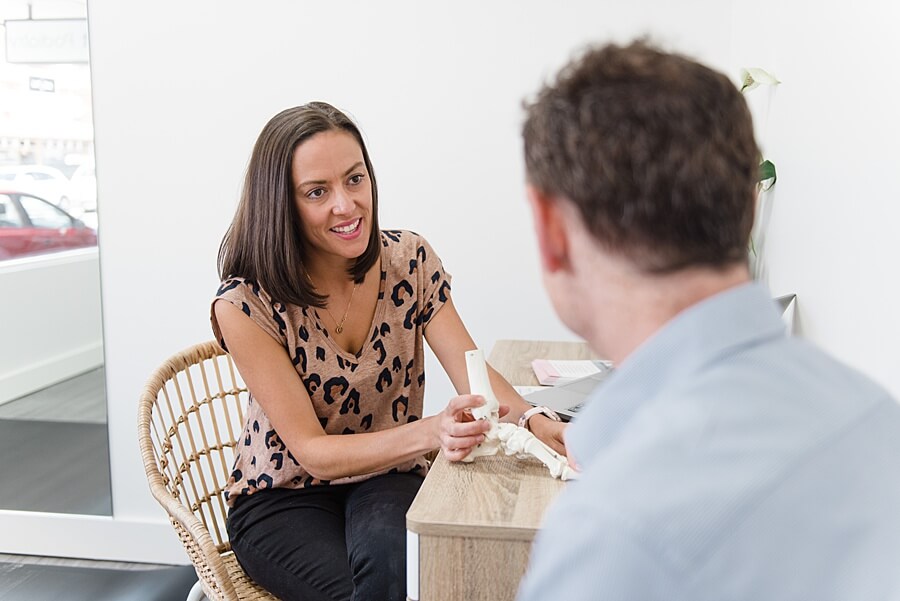Athlete’s Foot Treatment Melbourne
Tinea can be asymptomatic in the early stage, however if progresses it can become chronic and therefore lead to inflammation and itchy skin. If left untreated tinea can cause secondary fungal nail infections and even lead to bacterial infections.
Signs and Symptoms
The signs and symptoms of tinea can vary from person to person, but commonly include:
- Itching: The affected area may be itchy and may become worse as the infection spreads.
- Redness: The skin on the affected area may become red and inflamed.
- Scaling: The skin may become dry and scaly, with small flakes or blisters appearing on the surface.
- Cracking: The skin may crack, especially between the toes, and may be painful.
- Peeling: The skin on the affected area may start to peel away in small pieces.
- Burning sensation: The feet may feel hot or have a burning sensation.
- Odour: The feet may emit a strong odour due to the infection.
- Discolouration: The affected area may become discoloured, turning white, yellow, or brown.
- Thickening of the skin: In some cases, the skin on the feet may become thickened and may develop a callus-like appearance.
Causes
The fungi that cause athlete’s foot are called dermatophytes, which can thrive in warm, moist environments such as locker room floors, swimming pools, and public showers.
Athlete’s foot is contagious and can be spread from person to person through direct contact with an infected person or indirect contact with contaminated surfaces. Factors that increase the risk of developing athlete’s foot include:
- Wearing tight-fitting shoes or socks that do not allow the feet to breathe
- Sweating heavily, which can create a moist environment that is conducive to fungal growth
- Walking barefoot in public areas, such as locker rooms and showers
- Having a weakened immune system
- Having a history of previous fungal infections, such as jock itch or ringworm
- Having a skin condition, such as psoriasis, that can make the skin more susceptible to infection.
Diagnosis and Treatment
Our podiatrists will assess and examine the foot and recommend treatment options to treat tinea pedis. Often topical antifungal emollients available over the counter are recommended and the podiatrist will advise you on what treatments are most appropriate for your condition.
There are several over the counter medications available for athlete’s foot, including:
- Antifungal creams or ointments,
- Antifungal sprays,
- Antifungal powders,
- Soaps or washes containing tea tree oil, which has antifungal properties.
- Hydrocortisone creams or ointments, which can help relieve itching and inflammation.
It is important to carefully read and follow the instructions on the product label when using any over the counter treatments for athlete’s foot, including OTC sprays and powders. If symptoms do not improve or worsen despite using these treatments, our podiatrists are able to provide education and advice about preventing tinea and treating tinea.
Are home remedies appropriate for athlete’s foot?
There are some home remedies that may be helpful in treating mild cases of athlete’s foot. These remedies are not a substitute for medical treatment, but they can be used in conjunction with prescribed medications or in mild cases.
Here are some home remedies that may help treat athlete’s foot:
- Tea tree oil: Tea tree oil has antifungal properties and can be applied topically to the affected area. Dilute the tea tree oil with a carrier oil, such as coconut oil, before applying it to the skin.
- Apple cider vinegar: Apple cider vinegar has acidic properties that may help fight the fungus that causes athlete’s foot. Mix equal parts of apple cider vinegar and water and soak your feet in the solution for 30 minutes daily.
- Garlic: Garlic has antifungal properties and can be crushed and applied to the affected area or added to your diet to help fight the infection.
- Baking soda: Baking soda can help reduce moisture and fight fungal growth. Mix baking soda and water to create a paste and apply it to the affected area for 10-15 minutes, then rinse with water.
- Keep your feet dry: Keeping your feet clean and dry is important in treating and preventing athlete’s foot. Make sure to dry your feet thoroughly after washing and wear shoes that allow your feet to breathe.


Complications
Untreated tinea can lead to complications. Here are some of the possible complications that can arise:
- Secondary bacterial infections: Scratching the affected area can lead to breaks in the skin, which can allow bacteria to enter and cause a secondary bacterial infection.
- Cellulitis: In severe cases, the infection can spread to the deeper tissues of the foot, causing cellulitis, a serious bacterial skin infection that requires immediate medical attention.
- Chronic or recurrent infections: Tinea pedis can be difficult to treat and may recur if not treated properly, leading to chronic or recurrent infections.
- Spreading to other parts of the body: The fungal infection can spread to other parts of the body, including the hands, groin, and scalp.
- Weakened immune system: People with weakened immune systems, such as those with diabetes or HIV, are at higher risk of developing severe or widespread infections.
- Allergic reactions: Some people may develop an allergic reaction to the fungus, which can cause a rash, hives, or other allergic symptoms.
It is important to seek treatment if you suspect you have tinea pedis to prevent further complications.
Prevention
By following these tips, you can reduce your risk of developing athlete’s foot and keep your feet healthy and fungus-free:
Keep your feet clean and dry
Wash your feet daily with soap and water, and dry them thoroughly, especially between the toes.
Wear clean, dry socks
Change your socks every day, or more often if your feet tend to sweat heavily. Choose socks made of breathable materials such as cotton or wool.
Choose the right shoes
Wear shoes that fit well and allow your feet to breathe. Avoid shoes made of synthetic materials that trap moisture, such as rubber or plastic.
Avoid walking barefoot in public areas
Wear sandals or shower shoes when using public showers, locker rooms, and swimming pools.
Use antifungal powder or spray
If you are prone to athlete’s foot, consider using an antifungal powder or spray on your feet and in your shoes to help prevent fungal growth.
Don’t share personal items
Avoid sharing towels, socks, shoes, or other personal items with others to reduce the risk of infection.
Treat existing fungal infections promptly
If you notice signs of athlete’s foot, such as itching, scaling, or redness, seek treatment promptly to prevent further spread of the infection.

Our podiatrists are able to provide education and advice about preventing tinea and treating tinea.
If you would like an email with fungal nail and skin treatment recommendations from Highett Podiatry, please fill in the form below.
